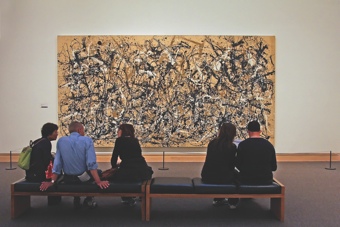In 2007, with financial markets ballooning on every side, the artist Damien Hirst cast a real human skull in platinum, encrusted the cast with 8,601 diamonds that might or might not have come from “conflict-conscious” sources, and called his construction For the Love of God. Images of the macabre object circulated with incredible speed, and there was cheery debate about whether the accomplishment of the work was in the realm of aesthetics or that of the market, whether what mattered were the artist’s choices or the fact that the piece had lived up to its announced intention to be “the most expensive piece of art by a living artist” and had sold for $100 million. Two years later, with financial markets imploding on every side, it was reported that the work had in fact been sold to a holding company that turned out to consist of Hirst’s gallerist, his business manager, his friend the Russian billionaire art collector Viktor Pinchuk, and Hirst himself. There were then those who, staring at their own newly empty stock portfolios, found in the title apt expression of their feelings. The work itself, with its diamond-laden eye sockets and its original inhabitant’s grinning teeth, seems unperturbed by any hollowness of value in the financial or art markets. It does not matter to this cynical epitome of our glittering age whether it was made for the love of anything but more zeroes.
Still, museum curators have found in Hirst’s skull and title connections to earlier eras of artistic creation. The Rijksmuseum, in Amsterdam, showed the skull among works of the Dutch golden age. In 2010, in Paris, the Musée Maillol displayed it among works that grapple with mortality. This past summer, the skull was part of a Hirst retrospective at the Tate Modern, in London. These exhibitions evoked the long tradition of including skulls in vanitas paintings, before which a viewer is meant to consider how little time we have. Hirst’s mocking of this time-honored tradition seems superficial and acquisitive to me, but he is not only far and away the richest living artist, he is also a tremendously popular one, and one whose art provokes thoughtful discussion. The curators of the Rijksmuseum mounted a wonderful website of the talking heads of viewers responding to the Hirst work, which make it clear that the skull is indeed understood by museumgoers as an important representation of our times. But to my mind, what the work represents, specifically, is not our artistic, or not only our artistic, but our financial life. As Blake Gopnik pointed out in the Washington Post at the time the skull was unveiled, it’s the purchase...
You have reached your article limit
Sign up for a digital subscription and continue reading all new issues, plus our entire archives, for just $1.50/month.
Already a subscriber? Sign in





